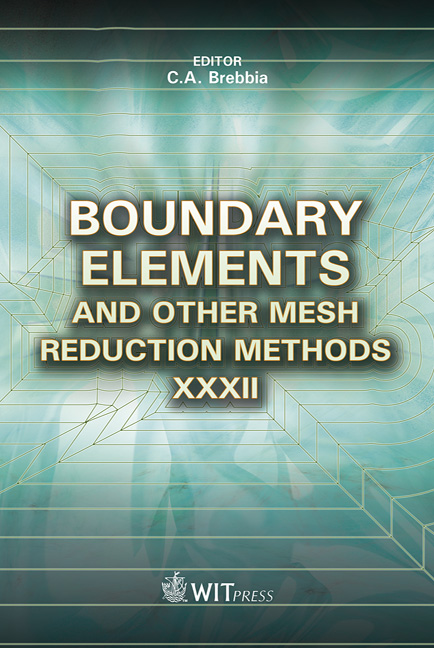Object-oriented C++ Boundary Element Solution Of The Vector Laplace Equation
Price
Free (open access)
Transaction
Volume
50
Pages
9
Page Range
295 - 303
Published
2010
Size
227 kb
Paper DOI
10.2495/BE100261
Copyright
WIT Press
Author(s)
J. A. Ingber
Abstract
The Boundary Element Method (BEM) lends itself well to an object-oriented implementation. Well-defined class hierarchies can reduce the size of a problem solution while improving the readability and maintainability of the solution. The BEMuses geometric elements, defined as collections of nodes, to model a surface. Boundary conditions, specified by the problem, are defined at each node. This suggests an object oriented solution that defines a base Element class that can be extended to define triangular elements and quadrilateral elements, and a base Node class that can be extended to define more specialized nodes, such as edge and corner nodes. Historically, BEM codes have been written in FORTRAN 90 and object oriented codes have been deemed too slow for such computationally intensive solutions. In this paper I will discuss the development and optimization of an object-oriented BEM code, written in C++, for solving the vector Laplace equation for the magnetic vector potential in three dimensions. The solution to the 3-D magnetic field problem was first written and tested in FORTRAN 90. Due to the complexity and size of the problem solution, the translation to C++ went through several stages. At each stage the code was tested for accuracy and speed. After optimization of the C++ code, which included optimization of memory allocation, optimization of class structures, optimization of functions required to build the discretized linear system of equations and optimization of the solver, the C++ code executed faster than the FORTRAN 90 code for all test problems. Keywords: boundary element method, object-oriented, C++, vector Laplace equation, magnetic vector potential, class hierarchies, node, element, off functional collocation nodes.
Keywords
boundary element method, object-oriented, C++, vector Laplace equation, magnetic vector potential, class hierarchies, node, element, off functional collocation nodes





